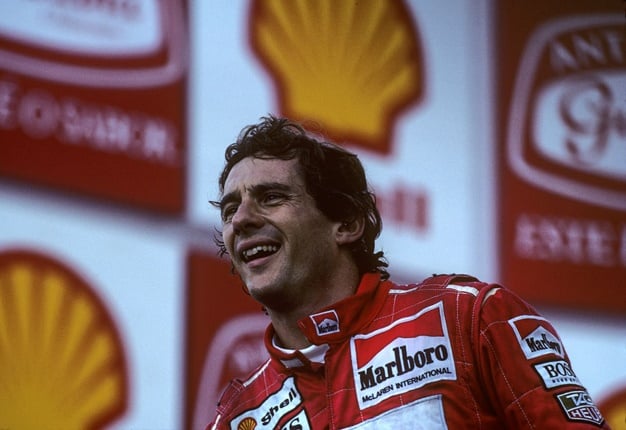
The 60s, 70s, and 80s were often referred to as the most dangerous eras in Formula 1. Why? Because on average, at least one driver would pass away in a race. That's how bad it was.
And those who did not succumb to injuries sustained on track still bared the scars of war. Drivers like Niki Lauda, who almost burnt to death - stuck in his on-fire race car at the 1976 German Grand Prix. Lauda is just one example, but you get the idea of how intensely scary the earlier years of F1 was.
But May 1, 1994, was a turning point for the sport. On this day, one of the greatest of all time, Ayrton Senna, passed away at the San Marino GP in Italy. And just the day before, during qualifying, a fellow racer, Roland Ratzenberger, also lost his life.
Another two deaths in one weekend were the turning point for safety in a sport that has become known for its fatalities.
Improved safety
Now, whether a driver passed away on-track or days, weeks, or months after the incident, the cause of death happened on the track.
It's mighty impressive how F1 has changed from a sport renowned for its death toll to one of the leaders in safety advancements. For more than two decades, Senna's death would be the last of an F1 driver, until Jules Bianchi's tragic accident at the 2014 Japanese GP. But in those 20 years, just how many changes and alterations did F1 go through?
As part of their racing attire, a driver's racing suit is fitted with a heat resistant fire suit. This extra padding gives the driver an added measure of safety when he is caught inside the cockpit of his on-fire racing car. After Lauda's incident, when safety marshals couldn't get him out of his car and fire divulged his body, the sport went to great lengths to ensure it does not happen again. It's an aspect that's been under constant review, and this safety measure has been evolving for the last 44 years.
A challenge drivers used to face was how quickly they could exit the wreckage. This forced F1 to look at the cockpits of its racing cars, which led to tremendous changes in design over the years. Nowadays, it only takes the driver a few seconds to exit his crashed car out of his own accord. The entire cockpit is a safety bed for the driver, and will you often see a driver walking away from a crash after flying through the air over 200km/h. These safety changes were accompanied by improvements to the front section of the car to protect a driver's legs.
Head injuries are a major concern for F1; hence a driver's helmet goes through stringent tests. Failing just one test will result in the helmet being deemed unsafe. Just how far did the sport come with helmet safety? Felipe Massa's life-changing accident in 2009 is the perfect representation of this advancement - ironic as it may be.
READ: F1 Gold - How a single spring almost maimed Felipe Massa's face in 2009
Following Massa's accident in 2009, the FIA (F1's governing body) re-evaluated the overall safety of the cockpit. Especially the deflecting of objects and protecting a driver's head. In 2014, following the Japanese GP, the topic was under the spotlight again and serious plans were made to bring some protection onto the car. This led to the halo device that debuted in 2018. While at first, it was a strange sight on the cars, it soon served its purpose when, in a few races, cars flew over a driver's head and the halo deflecting a 700kg car away from a driver's head.
F1 will forever be the pinnacle of motorsport, but even more, it will always be a leading force when it comes to safety.
The Mercedes F1 car and the halo device protecting the driver's head. Image: TeamTalk




 Publications
Publications
 Partners
Partners















